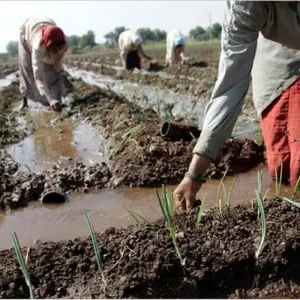India has been associated with Spices since time immemorial and is known as the “home of spices”. India is the largest producer, consumer, and exporter of spices and alone accounts for 70% of the world’s spice production. As per the UN Food & Agriculture Organization, the country produced 9.1 million metric tonnes of spices in 2019.
However, the rate at which the adulteration of spices in the country is rising, it is becoming imperative for everyone, whether it is an individual or an agribusiness, to buy spices that are safe. Some of the commercially available spices are adulterated with cheaper spices, other parts of the plant or bulked with fillers and dyes. As spices are high priced commodities, high activity of adulteration is prevalent to increase profit margins.
- Dried ground cinnamon is adulterated with nuts, sugar, rhizomes, and dyes to which the aroma of cinnamaldehyde is added.
- Ground chilies and turmeric are frequently adulterated with cheap dyes, tapioca starch, cereal flour, and lead chromate.
- Black pepper powder is mixed with ground Papaya Seeds.
- Cumin lots are mixed with similar size and colored straw pieces that resemble cumin seeds.

Spices Industry has a tremendously complex value chain comprising of multiple nodes:
Farm Level – Procurement (Mandi) – Pre – Processing – Production – Shipment.
Informed decisions, regarding quality and prices, are taken at every stage of the value chain, primarily through conventional/lab testing, and as a result, higher TAT and low efficiency of such testing lead to losses and low transparency across the process. Some additional issue related to conventional quality testing is listed below:
- Preliminary sample analysis takes between 3 – 4 days as it entails testing through long laboratory processes.
- Sample preparation and analysis is a highly skilled process involving qualified chemists and another technical workforce to perform analysis.
- Prohibitively costly equipment used for analysis ranging from 16 lacs to 2 crores.
Stakeholders need to invest heavily in capital expenditure and manpower to test internally, inter-alia TAT for third party testing is >2 days.
It became starkly evident during the COVID times where the laboratories were shut down. On account of the closures, necessary tests could not be performed and it had a profound commercial impact as the orders could not be delivered!
Such being the scenario, it creates an opportunity and needs for deployment of rapid onsite testing solutions. Agnext has developed a rapid quality assessment solution–SpecX Pro – in association with ITC– one of the biggest player in the Spices industry in India which can be deployed on-site (at Farmgate, in the Mandis or across in-house laboratories) and provides instant analysis on the chemical composition of spices, such as Curcumin% in Turmeric, Capsaicin, and ASTA Color analysis in Chilli and Volatile Oil content in Pepper and Ginger.
For spices, aromatics, herbs, grains, oilseeds, and pulses, AgNext has developed an AI-based rapid quality assessment solution using molecular sciences that enables you to make quick decisions for quality estimation, within 30 seconds. Qualix solution doesn’t require any laboratory environment for testing and can be used in a field environment across deployments.
On account of its ability to provide accurate results within 30 seconds, the device has the potential to facilitate instant decisions on-field at the time of procurement itself. The ease of testing on-site has the potential to create new “Test and Buy”, a win-win situation for producers and buyers.
SpecX Pro indeed is going to change how Spices have been procured and tested so far and would decrease the seepage of adulteration, ensuring the best quality consumer products.
To know more about Qualix please write to contact@agnext.com or call +91 9700720005.










